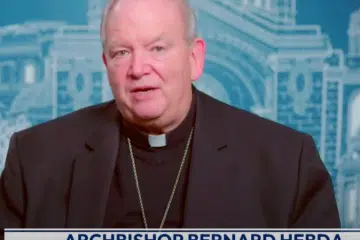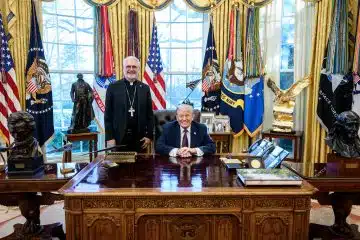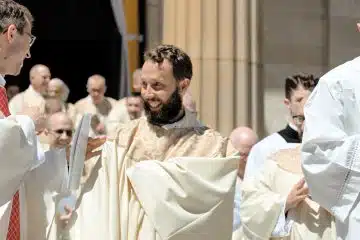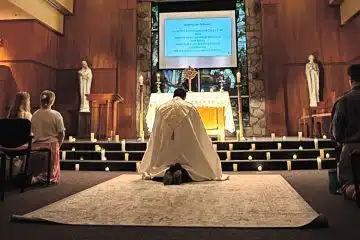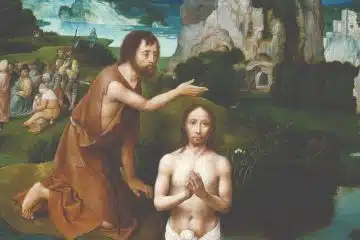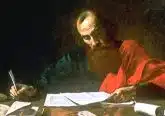ORIGINAL UNITY PART 3: THE CALL TO COMMUNION
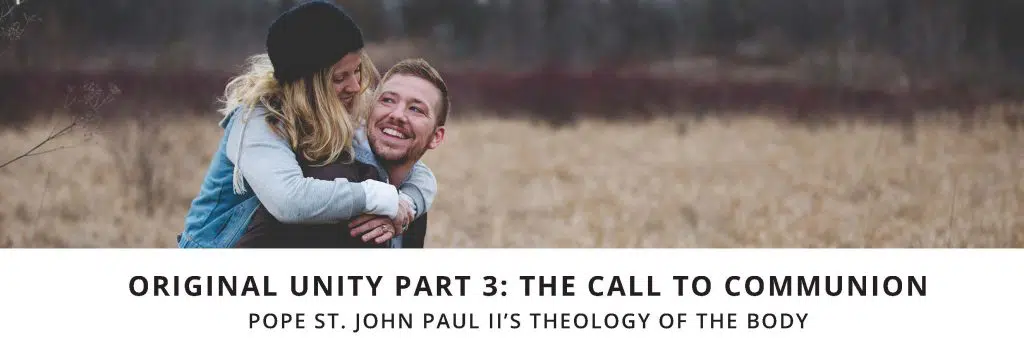 This article is part of an ongoing series on Pope St. John Paul II’s “Theology of the Body” (TOB).
This article is part of an ongoing series on Pope St. John Paul II’s “Theology of the Body” (TOB).
In recent articles, I reflected on Pope St. John Paul II’s concept of original unity. Reflecting on Genesis 2, the pope drew attention to our own experience of being male or female. This sexual difference inserts a duality in our humanity. As I discussed in prior articles, man and woman both possess the fullness of human nature, but they have and express that nature differently by way of their maleness or femaleness. It is as if male and female are two modes of being human. Man and woman are thus equal in dignity and united in the one human nature, but distinct from each other in a fundamental and profound way because of their sex. Pondering further this paradox of unity and duality with Pope St. John Paul II’s help will deepen our understanding of our human identity and vocation.
We discover our sexual identity as male or female in the body. The body reveals the person, and in doing so reveals whether this person is male or female. As the Church has repeatedly affirmed, this maleness or femaleness is not a superficial feature or mere biological fact that can be overlooked or dismissed. The maleness or femaleness revealed by our bodies reflects a reality inscribed in the depth of the person. Being created male or female affects the entire person all the way to the core of his or her being. The body bears witness to this and testifies that we – male and female – are both human persons, but we are distinct from each other in this mysterious and irreducible way.
The sexual difference of man and woman opens a new possibility for unity that builds upon and completes our more basic unity in the one human nature. Our sexually differentiated bodies show us that we are made “for” each other. Male and female are fundamentally oriented toward each other. Pondering our sexual difference, man and woman discover in themselves a certain openness inscribed by God to receive the other as a gift and give ourselves totally in return. Thus, we discover through our male and female bodies the call and capacity for communion of persons.
This communion refers to the intimate union that can be experienced by persons through a total gift of self. It is possible because of our unity and distinctness in our sexually differentiated humanity. The “place” God specifically designed for this intimate union to occur and come to fruition is what we call marriage, which the Church has always affirmed is only possible between a man and a woman.
Because of our sexual difference, man and woman can come together and form a communion of persons through the intimate giving and receiving of their whole selves in marriage. Our bodies show us that we are made for this. The male human body makes no sense without reference to the female human body and vice versa. Both bodies reveal a unique, irreplaceable human person, while at the same time showing that our maleness and femaleness complement each other. Indeed, man and woman are apt to come together in a way that unites the two so intimately that Scripture refers to them as “one flesh” (Gen. 2:24).
The capacity for communion that we discover through our bodies reveals a new and deeper layer of our identity and our calling as human persons made in the image and likeness of God. Indeed, Pope St. John Paul II wrote,
“Man becomes an image of God not so much in the moment of solitude as in the moment of communion. He is, in fact, ‘from the beginning,’ not only an image in which the solitude of one Person, who rules the world, mirrors itself, but also and essentially the image of an inscrutable divine communion of Persons” (TOB 9:3).
Pope St. John Paul II is referring to the Blessed Trinity, and he further asserts that this “trinitarian” understanding of the human person as an image of God “constitutes perhaps the deepest theological aspect of everything one can say about man” (TOB 9:3). Therefore, it bears returning to this theme to unpack further how man, as male and female, images the eternal Triune God.
 Dr. Andrew Sondergren, MTS, PSYD. is a Catholic psychologist and director of psychological services for Ruah Woods. He speaks on topics related to the integration of psychology and the Catholic faith. He and his wife, Ellie, have been married 21 years and have five children.
Dr. Andrew Sondergren, MTS, PSYD. is a Catholic psychologist and director of psychological services for Ruah Woods. He speaks on topics related to the integration of psychology and the Catholic faith. He and his wife, Ellie, have been married 21 years and have five children.
This article appeared in the January 2022 edition of The Catholic Telegraph Magazine. For your complimentary subscription, click here.


